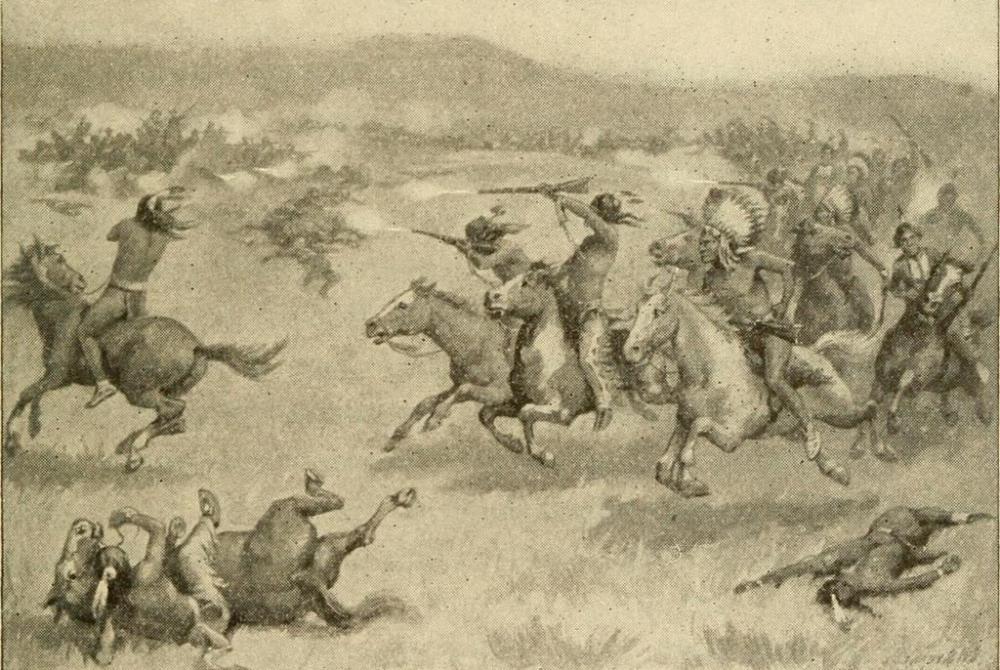At WiseGEEK, we're committed to delivering accurate, trustworthy information. Our expert-authored content is rigorously fact-checked and sourced from credible authorities. Discover how we uphold the highest standards in providing you with reliable knowledge.
What is the Sioux Reservation?
The Fort Laramie Treaty, an 1868 agreement between the United States and Sioux, formed the Great Sioux Reservation, which encompassed 60 million acres in the western half of South Dakota west of the Missouri River. It included hunting territories in unceded sections to the north, west and south of the Great Sioux Reservation. These areas include parts of modern-day North Dakota, Montana, Wyoming, and Nebraska. Most of this land is currently in possession of the United States after having been partitioned into five smaller reservations in 1889. Various sections of the resulting reservations were abandoned or seized for construction of reservoirs but not returned to the Sioux.
Establishment of the Great Sioux Reservation was necessary as the U.S. continually encroached on Sioux lands as settlers moved westward and new trails were established. After the Fort Laramie Treaty of 1868, the Sioux struggled to hold on to the lands they had been given. Once settlers discovered gold in the Black Hills, the U.S. government tried to convince the Sioux to lease or sell the hills back to them. The Sioux refused, saying that the Black Hills were sacred to them as their traditional birthplace. Eventually, Gen. George Custer and the 7th Cavalry fought the Sioux in the Battle of Little Big Horn in 1876.

The Sioux were victorious in that battle, but the U.S. was outraged and escalated hostilities against the Sioux, resulting in the eventual surrender of all but a few of the Sioux chiefs. The U.S. forced the Sioux back to their reservations. Boundary lines were redrawn and the Black Hills were removed from Sioux reservation lands. In 1889, the Great Sioux Reservation was dissolved and divided into five smaller reservations: Standing Rock, Cheyenne River, Pine Ridge, Rosebud, and the Lower Brule.

There are now seven Sioux reservations in South Dakota: Cheyenne River, Crow Creek, Lower Brule, Rosebud, Sisseton, Yankton, and Pine Ridge. Other Sioux reservations are located in Minnesota, Montana, Nebraska, North Dakota, South Dakota, and Wisconsin. In Canada, where tribal communities are known as First Nations, there are Sioux First Nation reserves in Alberta, Manitoba, and Saskatchewan.

U.S. reservations are run by tribal governments, which are supported by the U.S. Bureau of Indian Affairs. Sioux reservations face socioeconomic and public health issues including extremely high rates of unemployment, poverty, alcoholism, and obesity. Only about half of enrolled Sioux are living on reservations, where they continue to work to improve living conditions and the local economies.
AS FEATURED ON:
AS FEATURED ON:














Discussion Comments
The indian was gypped by the treaties broken by the white man. The white men killed off all the buffalo so the indians had to depend on handouts given to them by the whites to survive.
If the indians caused any trouble then the whites threatened to cut off the handouts. It's sort of like today with the people on welfare saying if you cut our food stamps, SSI, etc., then we won't vote Democrat.
If you ever have a chance you should try and visit the Rosebud Sioux Reservation in south-central South Dakota. The land is stunning there and taking in a pow-wow is something to be experienced.
What I really enjoyed about my visit, besides the natural beauty of the canyons, was meeting some of the great American Indians that live there. They hosted wonderful pow-wows, and their annual fair featuring Wacipi, Rodeo, and Special Events was a lot of fun.
I think if you want to really get in touch with the history of America you should try and visit one of the Upper Sioux Indian Reservations, or a place like Rosebud.
I have always been fascinated by the Sioux tribe as there is a quite a bit of aboriginal blood running through my veins. My mother used to tell me what life was like living on a Sioux Indian reservation, though our family left when my mother was still at quite a young age, so they could move into the city.
There are actually tours nowadays that show you some of the more famous sites on Sioux land. I think it would be interesting to visit the grave site of Sitting Bull, which was recently returned to the ownership of the Standing Rock Sioux Tribe. I would like to catch up a bit more on my history.
Post your comments